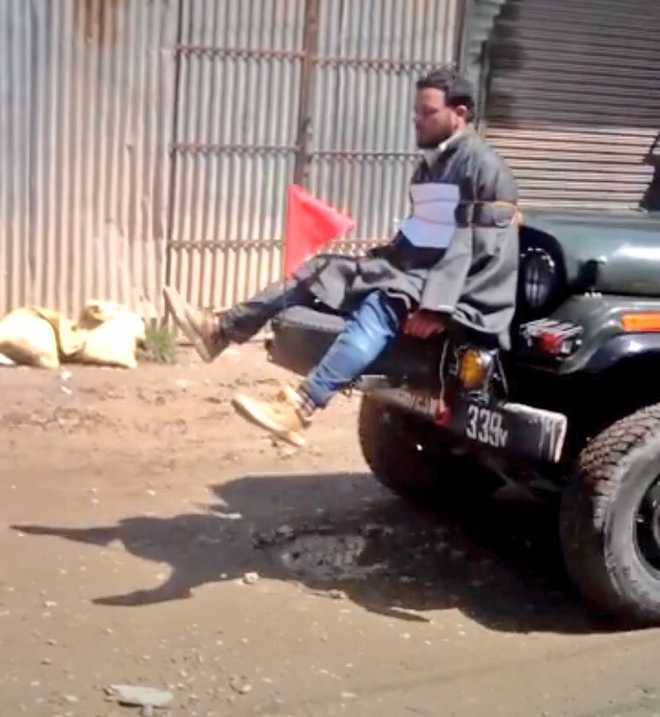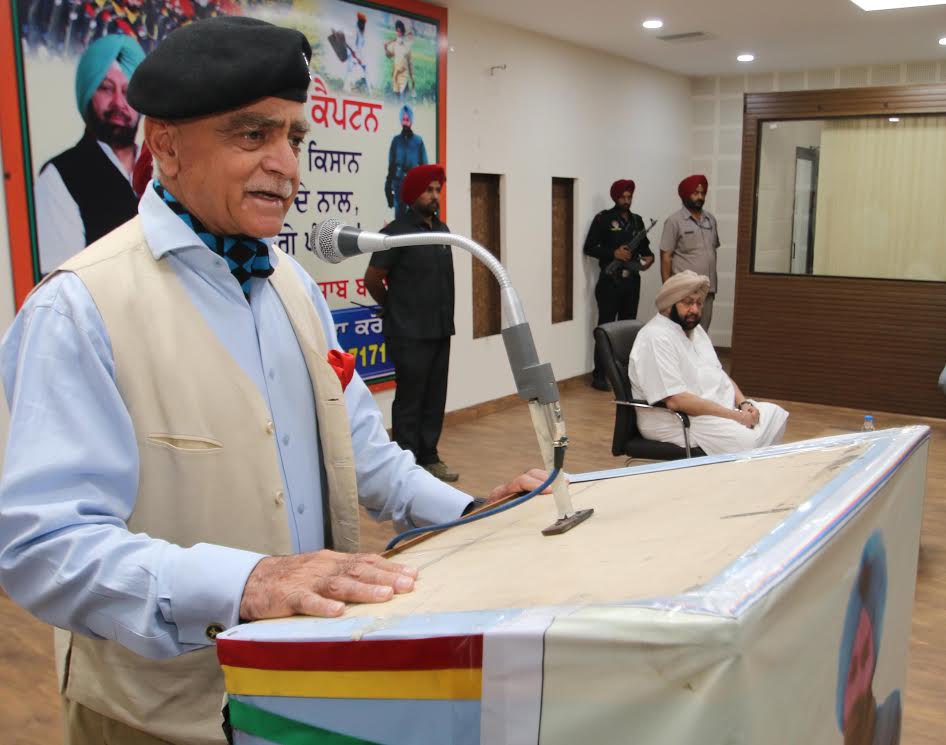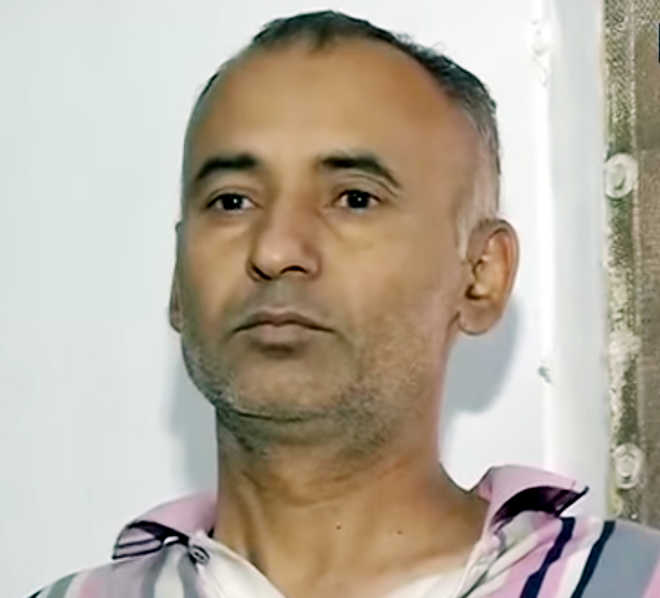
CRPF personnel standing guard at a polling station during repoll in Srinagar Lok Sabha constituency in Budgam district of Kashmir. (Photo: PTI/File)
Jammu and Kashmir is in election mode, and two important
Lok Sabha byelections are in process. The turnout in Srinagar
was abysmal, and the same would have happened in Anantnag
too if it hadn’t been postponed for six weeks. Of course, there
is no guarantee of normal polling on May 25, when the bypoll
is now scheduled. In Srinagar, the violence made more news
than the turnout, with eight lives lost.
Having been associated with most elections in J&K since 1989,
I can recall heated discussions whenever they took place. But
none revolved around the real issue – conduct of democratic
processes of any significance in an internal security scenario
that has proxy war at the core. The United Nations, for
instance, invariably seeks to hold elections as the grand finale
of any peace process in a conflict zone in which peacekeeping
operations have been in place. The finest examples are
Cambodia and Mozambique, both of which had proxy internal
conflicts of Cold War vintage, and ended in situations of
stability with elected governments; both have their run with
problems, but none of the magnitude of pre-election periods.
Democracy is presumed to be a great leveler and empowers the
very people who fight each other or the state; and gives them a
chance to enter an era of stability and aspire to improve their
lives. It is supposed to make the voice of the silent majority
relevant, and a chance for their children to lead better lives. It
is also meant to iron out differences and let the majority view
prevail. However, a million-dollar question always remains: is
democracy necessarily the end process of seeking peace in a
conflict zone, or is it a facilitator that enables the advent of
peace? There’s no better place to examine this than Kashmir,
which has seen turbulence and conflict for the past 28 years –
conflict driven by the proxy support of an adversary, a mix of
ideology and politics and confused aspirations. It’s a classic
case where the democratic process has been in place alongside
conflict for almost 21 years (since 1996).
The current context of the conflict goes back to 1989, but the
background is too well known. Let it suffice that the trigger
was an allegedly rigged election (1987) but it was just a trigger.
The actual conflict emerged for historical reasons, more so due
to external support for secession and internal mismanagement.
A couple of points from 1989 to 1996 are relevant. During this
time the sentiment for separatism was strong in Kashmir and
some other Muslim areas south of the Pir Panjal. Why was it
considered necessary that Assembly elections be held in 1996
without awaiting full stabilisation? Obviously polls were seen
as a stability facilitator. India was under intense pressure
internationally amid the Pakistani campaign to paint it
black. New Delhi had, however, weathered a serious onslaught
by US assistant secretary of state Robin Raphel, an ardent
Pakistan backer. The foreign element of the militancy – the
pipeline of the non-Pakistani Mujahideen – had dried up. The
Ikhwanul Muslimeen, the counter group set up by India, was
reasonably effective at that time. The decision to hold
Assembly elections at that juncture was extremely bold, and
well thought out. The turnout percentage was not the essence;
the event itself was, including the installation of an elected
government. Its strategic messaging was massive. The turnout
didn’t prove too bad either. The years 1996-97 were crucial for
India. Pakistan had successfully installed a Taliban-led
government in Kabul, and could focus its attention much more
on J&K. The decision to risk elections was also aimed at
countering the Pakistani propaganda that J&K was in chaos. It
also firmly communicated India’s resolve after another
landmark event was used for strategic messaging; this was the
joint resolution of the two Houses of India’s Parliament on
February 22, 1994 that the entire kingdom of the erstwhile
Maharaja of Kashmir belonged to India.
The 1996 elections brought a legitimately-elected government
to power. It gave an impetus to political activity, but given the
security situation it was risky for legislators to venture into
their constituencies. In areas close to the Line of Control it was
easier, and that’s where political activity flourished. This led to
the creation of the PDP at the instance of Mufti Muhammad
Sayeed, adding more variety to Kashmiri politics. Where
politics and elections failed the people of Kashmir in particular,
and not J&K, was the inability of the political class to involve
the people in more governance-based issues at the ground
level. There were few legislators willing to undertake personal
risk to enable active engagement with people. The stream of
elections since 1996 did create awkward moments, and some
sense of confusion in the minds of mainland India.
Among the reasons for confusion was, first, the improving
voting turnout percentage. Yet after government formation,
support to anti-national activity continued by some who had
taken part in the elections. Most of this was in the form of
over ground support. The Indian public largely assumes that
voting in elections affirms faith in the Indian Constitution.
Some Kashmiris aligned against India, however, say they vote
only for the purpose of their administrative needs, but don’t
have faith in the Constitution or accession to India. Second, on
a similar note, many young boys turn out for recruitment to the
Army or paramilitary forces every time a drive is held. It is
claimed many are stone-throwers. My experience shows this is
not true. There are many young people who may not have any
love for India, but they don’t necessarily indulge in any form of violence.
They carry deep-rooted alienation, and at the first instance of a
chance of employment they shed their inhibitions; quite apart from the stone thrower variety. Classically,
this is a case for psychologists and sociologists to study in more detail.
Alienation and dislike amounting to hatred are very powerful
emotions that can’t be glossed over. Psychologists should
suggest methods of communication to deal with this alienation.
A lot of people believe that applying principles of rationality
may fetch dividends. This means people should use elections to
convey their true feelings. They shouldn’t use violence but
voice democratic dissent against issues they strongly feel
about. This advice is, however, fine for straightforward security
situations, but not where vicious proxy wars are under way.
The separatists invariably oppose elections, but with varying
degrees of seriousness. When they sense there is a public desire
for betterment through “roti, kapda aur makan”, the objections
are low-key, but at politically sensitive moments the level of
discouragement is again very high.
The current impasse is the most challenging in the short history
of J&K’s electoral processes since 1989. The separatists will be
elated by the government’s failure to control violence as well
as the low turnout. The Opposition parties don’t seem to
mind this either as it gives them a chance to browbeat the
government.
Elections may perhaps not be the best way to counter violence.
They may actually provide circumstances for more violence.
But elections can’t be wished away either in a democratic
nation – and that is where the dichotomy lies.

























































































































